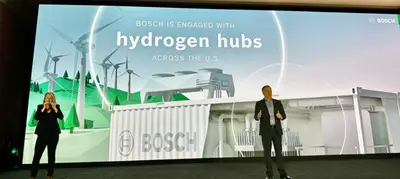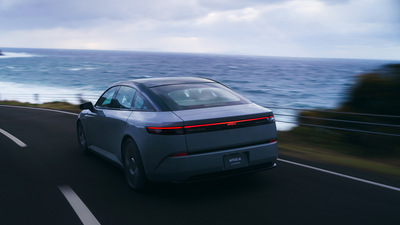Software, Hydrogen and Dreams - Consumer Electronic Show 2024 Report
By Thom Cannell
Senior Editor, Technology Chief
Michigan Bureau
The Auto Channel.
Las Vegas January 9, 2024; CES has become the most significant new car show in North America. While not all companies choose to exhibit, those that do must have significant news. We saw, today, several that were of interest, minor and major.
Volkswagen put a new ID7 and GTI onto a stage, primarily to announce inclusion of ChatGPT into their information space in the second quarter of this year. During the demo with partner Cerence, not only could better information be discovered than with Alexi or Siri, but responses were more human-like and more nuanced. Surprisingly, VW said it was possible to add this feature to vehicles already on the road, but gave no further details.
Want to know where to find an Indian restaurant featuring butter chicken, no problem. As was a followup request for a recipe. Instead of a direct query, like “Siri, where is the nearest CVS” you could simply say “I need medicine”. Queries for a phone charger or “I’m feeling chilly” were equally well answered, even to “What are good science projects for middle school”? We expected the ever-popular baking soda volcano, but were cut off before that answer was complete.
Mega-supplier Bosch again described its commitment to hydrogen for fuel cells, it’s interest in producing green hydrogen for fuel cells by electrolysis, and announce a this-year direct injected or port injected hydrogen gas-as-fuel engines for trucks. Bosch’s depth is so great we will cover this extensively in another story.
Hyundai and Kia, sister companies, were equally committed to the hydrogen economy, but in very different ways. Hyundai first commented on their developments in making green hydrogen out of organic waste sludge, and then from plastic waste, then about their efforts to create hydrogen hubs beyond the California corridor.
The company claims it was the first mover in hydrogen, and has more hydrogen powered vehicles on the road than anyone. They then focused on another major CES theme, software defined vehicles. This is massively confusing and will, again, require a full story to get to the grit of what SDVs mean to you, the driver and customer. Hyundai calls their effort a “Software-defined Everything' (SDx) strategy by redefining vehicles, fleets and transportation systems with software and AI”. Surely, an in-depth explanation is needed, but if you’re thinking that it sounds like the transition from flip-phones to iPhones, you’re on the right track.
Kia opened their presentation, predictably, with reference to their recent conquest at the North American Car Of The Year where the EV9 was named best SUV for 2024. And then jumped the shark.
Kia will introduce, next year, Platform Beyond Vehicle (PBV)—modular electric vehicles built on a skateboard similar, but not identical to that of their current EVs and designed for fleets, ride hailing and utilities. Out of the gate, the PV5 will go into production in Korea, later other continents based on demand, and to be base on the corporate SDx software defined vehicle platform. PBVs are modular and able to swap modular components to shift from something like a delivery van, to SUV, to pickup.
"Kia's PBV business represents our vision of going beyond the traditional concept of automobiles by fulfilling the unmet needs of diverse customers and communities through optimized vehicles and services catering to specific market and business circumstances," said Ho Sung Song, Kia President and CEO.
Hyundai envisions PV1 as an autonomous last mile delivery vehicle, the PV3 as a driver-guided vehicle, PV5 in its many versions will be the mainstay until after 2027 when the PV7 arrives, a larger and human-guided vehicle, but perhaps L3 or L4 by then.
Sony and Honda update their AFEELA collaborative vehicle, moving it closer to production.
Defined by software designed for mobility, the concept incorporates unexpected features, like a full use of the Epic Games UnReal Engine to create user experiences beyond what’s available.
The company, Sony Honda Mobility Inc. (SHM) says it plans to “explore the relationship between people and mobility in a broad, deep, and open way. We want to promote an open development environment for the free expression of digital gadgets so that users will become endeared to AFEELA.” Until the concept moves closer to a reality that includes governmental approval of autonomy, AFEELA seems a pure mobility concept pushing familiar boundaries.













